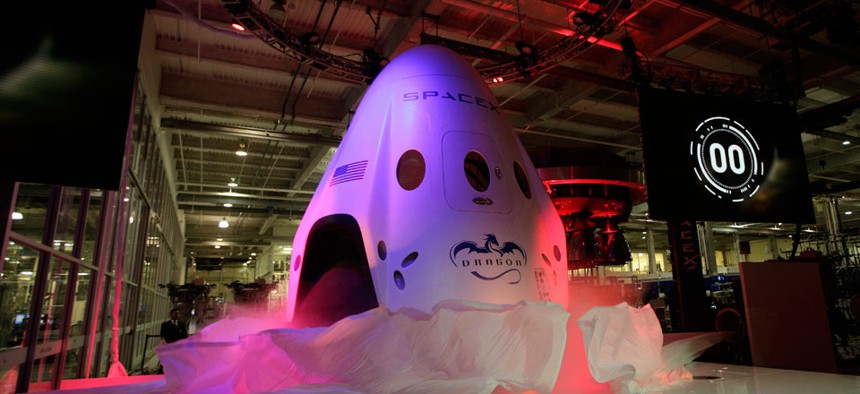SpaceX Is Bringing Mice, X-Rays and 3-D Printers into Space

The SpaceX Dragon V2 spaceship is unveiled at its headquarters on Thursday, May 29, 2014. Jae C. Hong/AP
On the craft will be 5,000 pounds of supplies, including twenty mousetronauts.
SpaceX is having a very exciting week. First, Elon Musk's company was selected along with Boeing to create news spacecraft for the upgraded NASA Commercial Crew Program. Saturday is another thrilling day: SpaceX CRS-4 mission will launch. The spacecraft will be headed to the International Space Station with some very curious and precious cargo.
On the craft will be 5,000 pounds of supplies, including twenty mousetronauts, a SpinSat satellite, an x-ray machine (for the mice) and a 3-D printer. Animals regularly travel to space, though sometimes tragically, as with Russia's sex space geckos, so while we are happy the furry guys are headed to orbit, they aren't the stand out passenger on the CRS-4 mission. The 3-D printer, however, that is a quite the ground, er, space breaker.
The 3-D printer is made by Made In Space, and is specifically engineered for space. The Verge notes that the "whole printer had to be built sturdier than off-the-shelf models so that it would survive launch, and constructed in such a way that components wouldn’t float around."
The current version of the printer can only print basic items but the company has high hopes for zero gravity 3-D printing. With this model, the astronauts will test printed items in hopes that if the small things work, they can then move on to printing tools and replacement parts, eliminating the need to have them delivered from the ground.
Aaron Kemmer, CEO of Made In Space, told CNet, "We've been building tools for thousands of years. This is the first time that it's not happening down here, but up there [in space]. That's paradigm shifting. We can actually leave planet Earth if we can start doing this more and more, if we start living off the land, building there, getting independent from planet Earth, rather than being completely dependent." Kemmer has extremely high hopes for the printer and is even considering using regolith (the material on the surface of the moon) as a filament for the printer.


